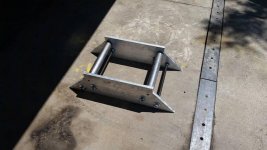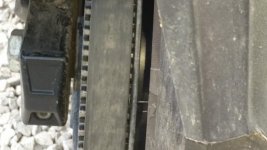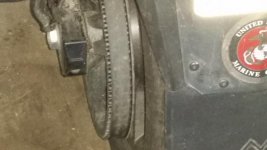Roadster Renovations
New member

Belt Alignment And Tensioning System.
Allows for belt to be adjusted with correct weight on the wheel. Extremely fast to do. Since the wheel is turning while the adjustment is made it is very easy to get the correct position. By turning the wheel slowly while in gear, no codes are triggered. If they are, they will reset after the first test ryde.
If everything continues the way it is going, we will showcase this at the East Tenn Rally next month! Hope to see you there.


